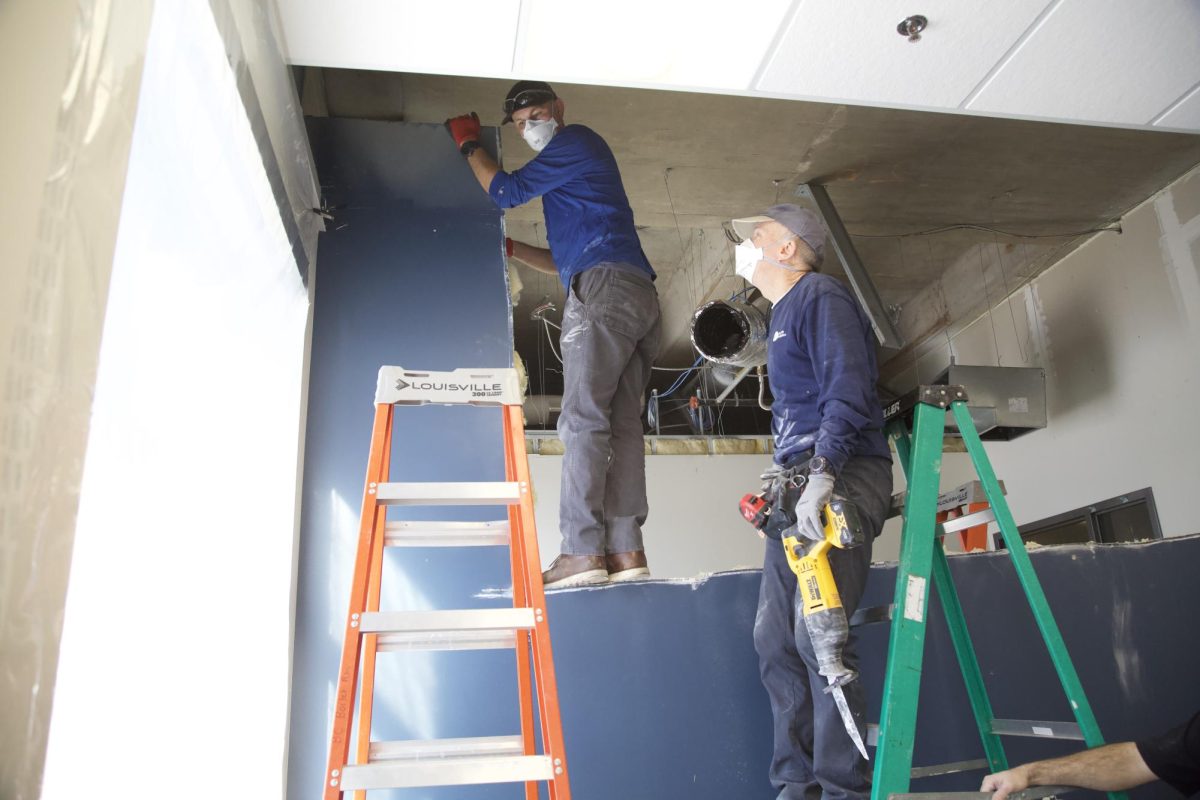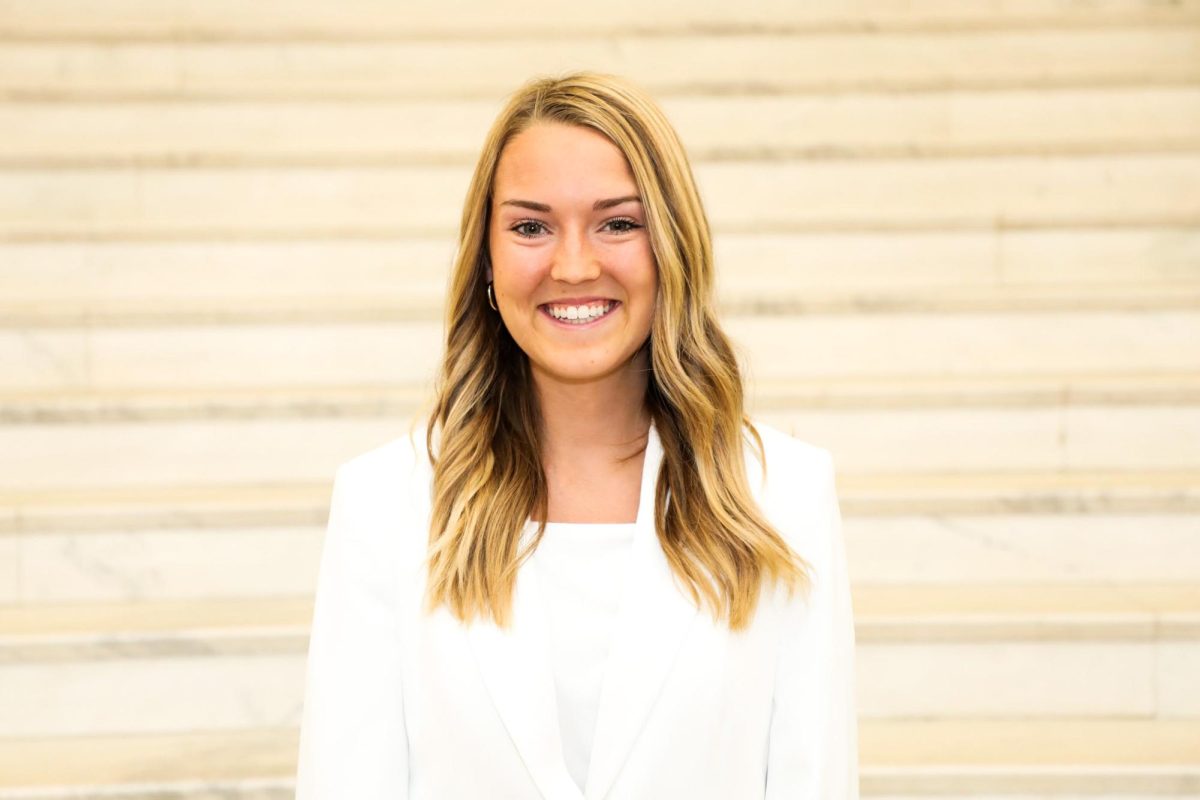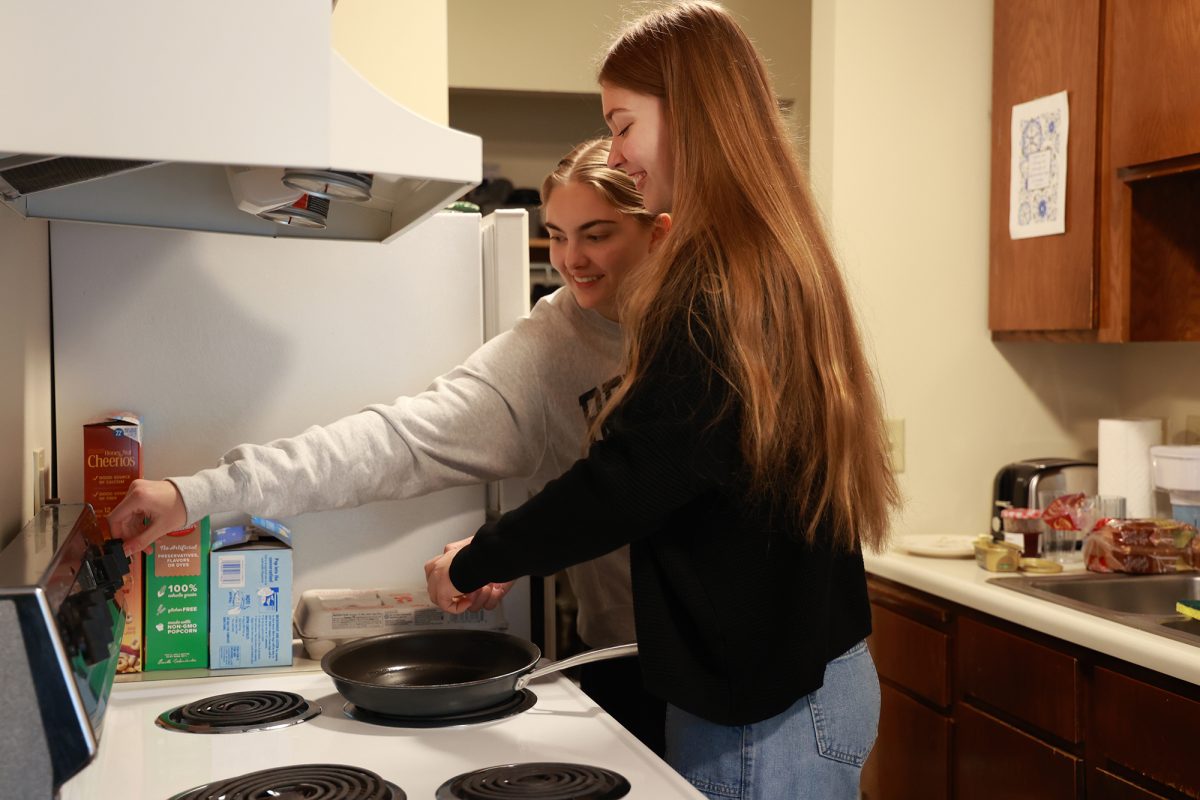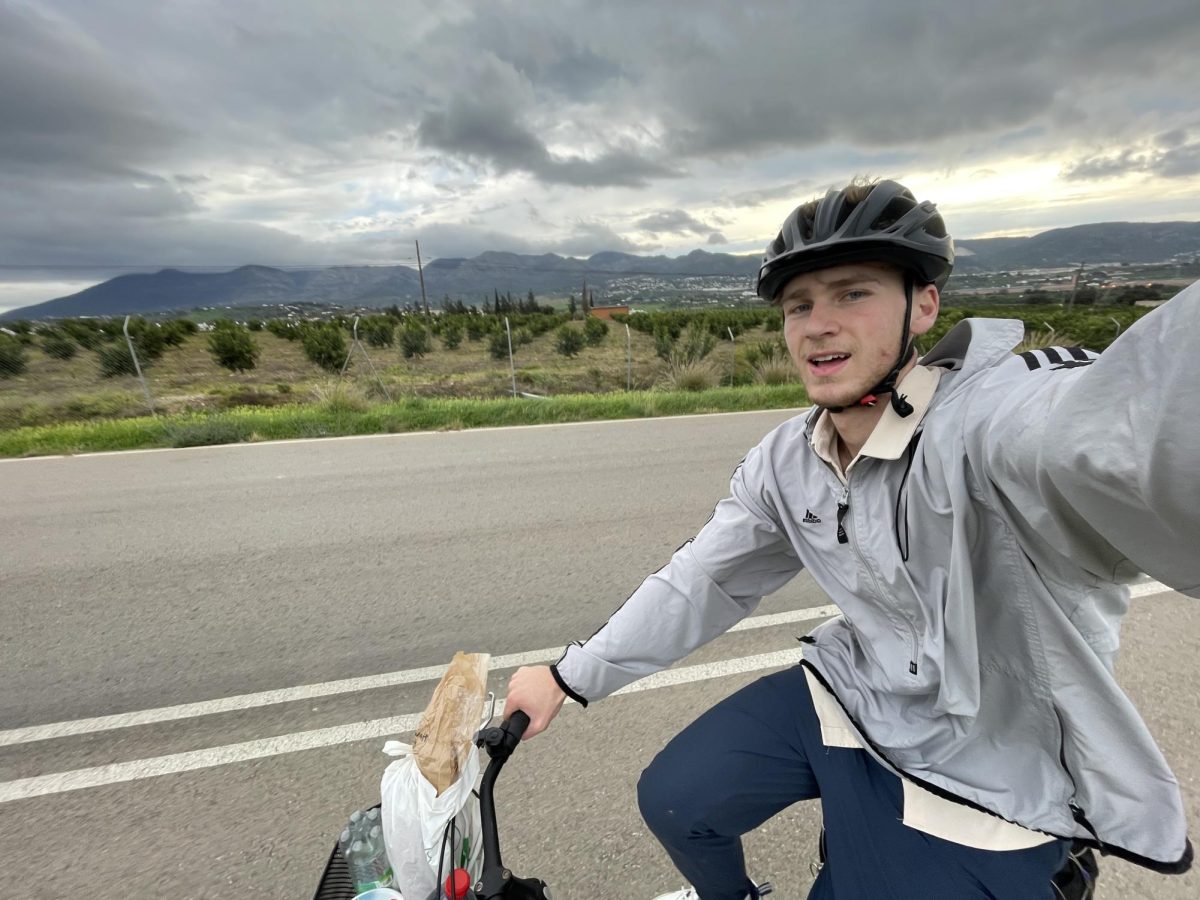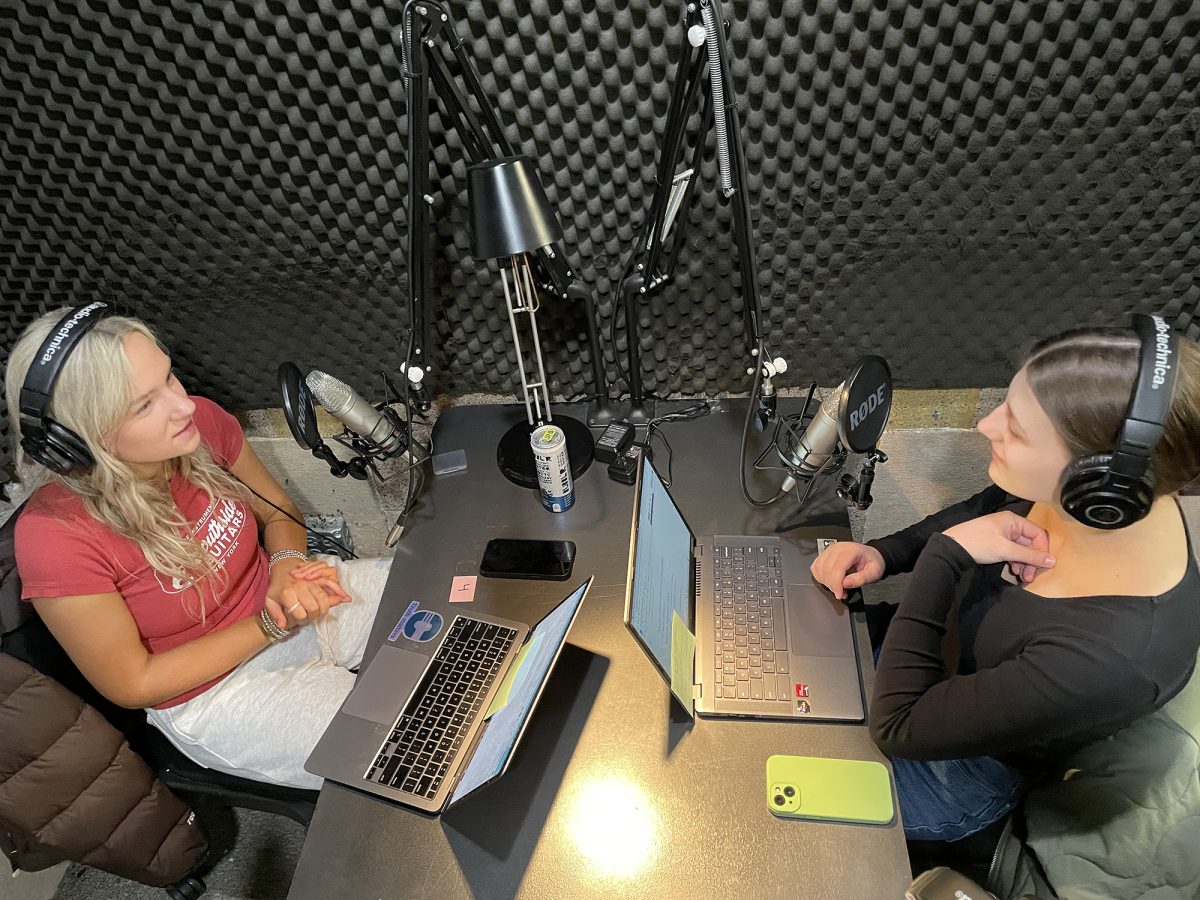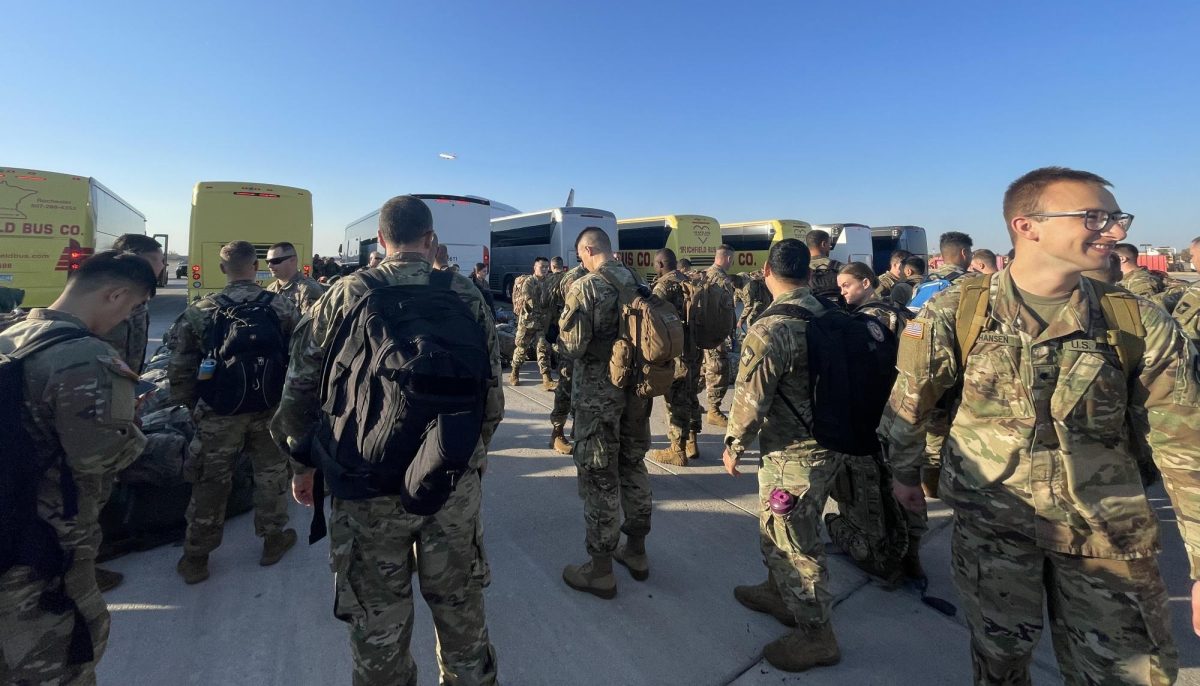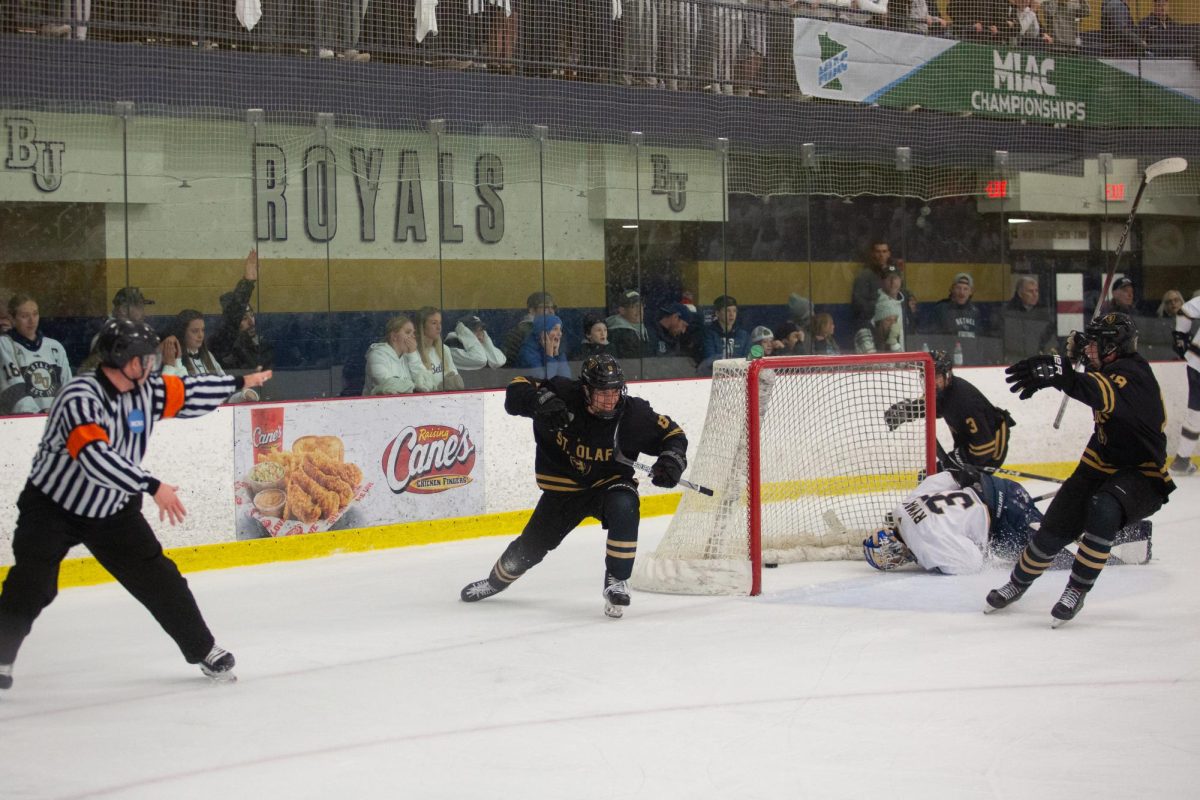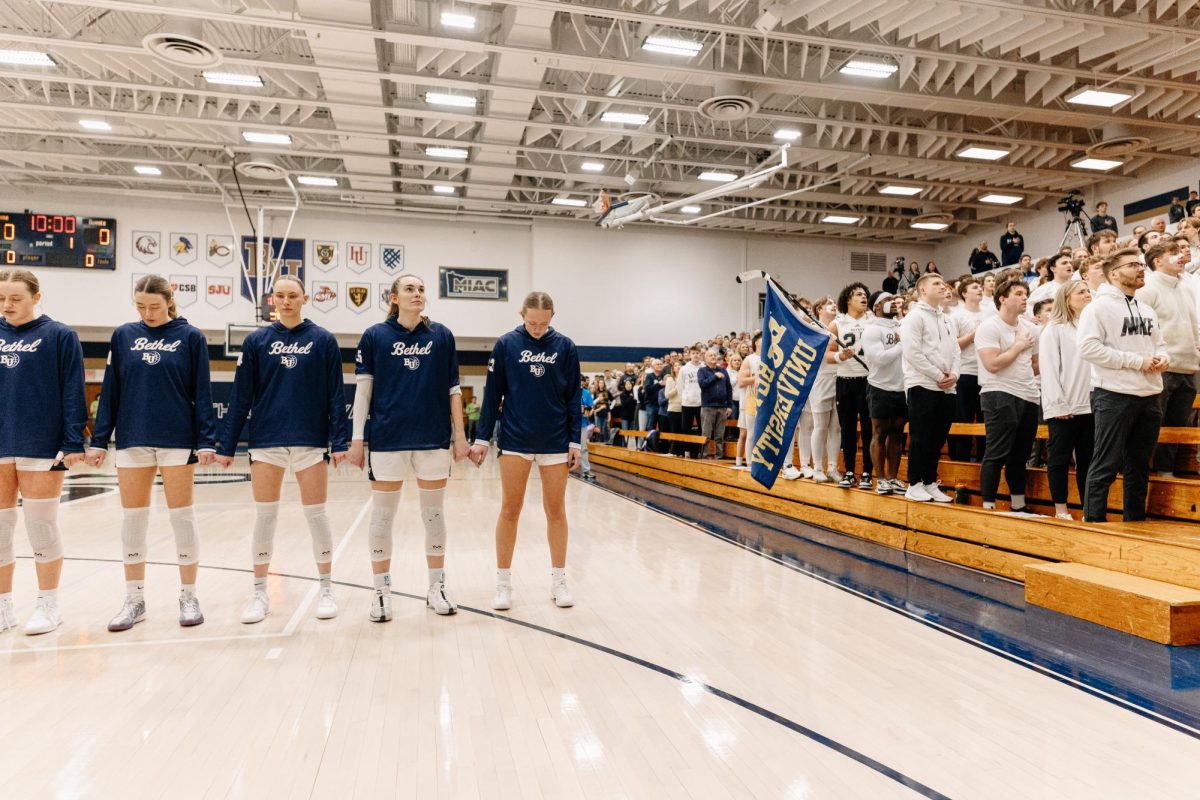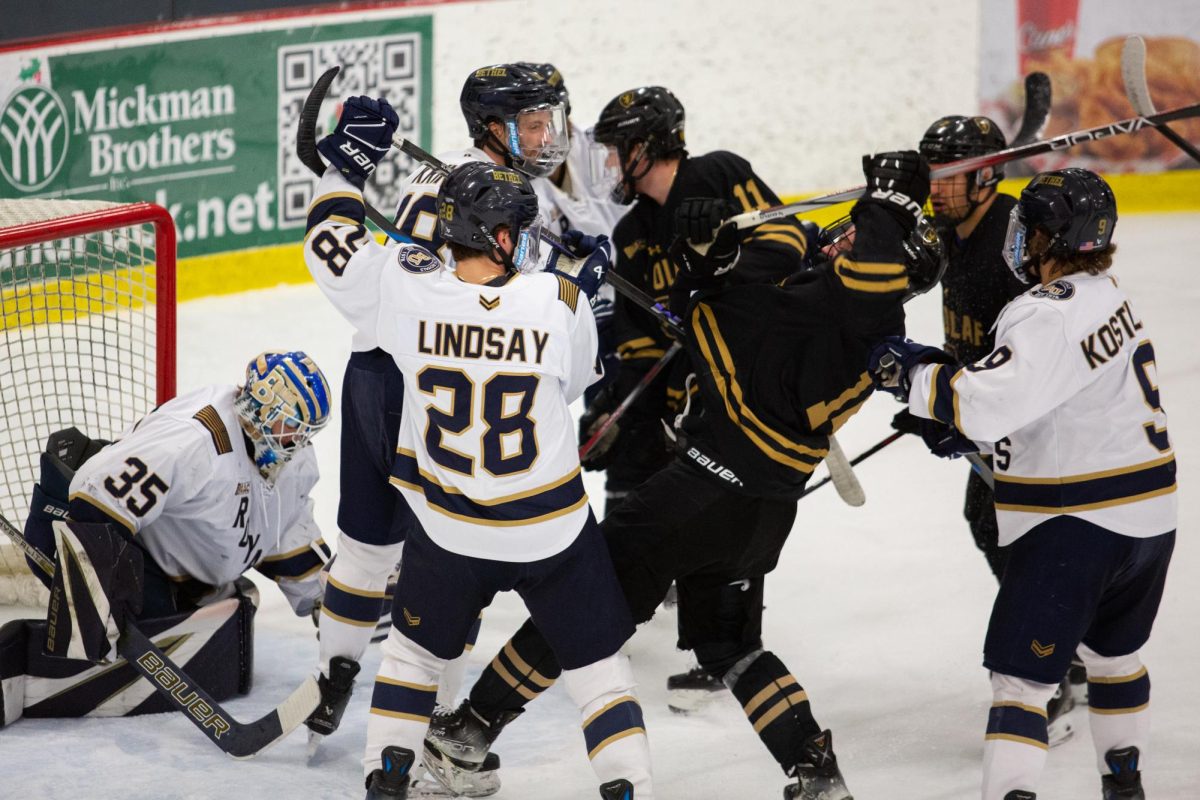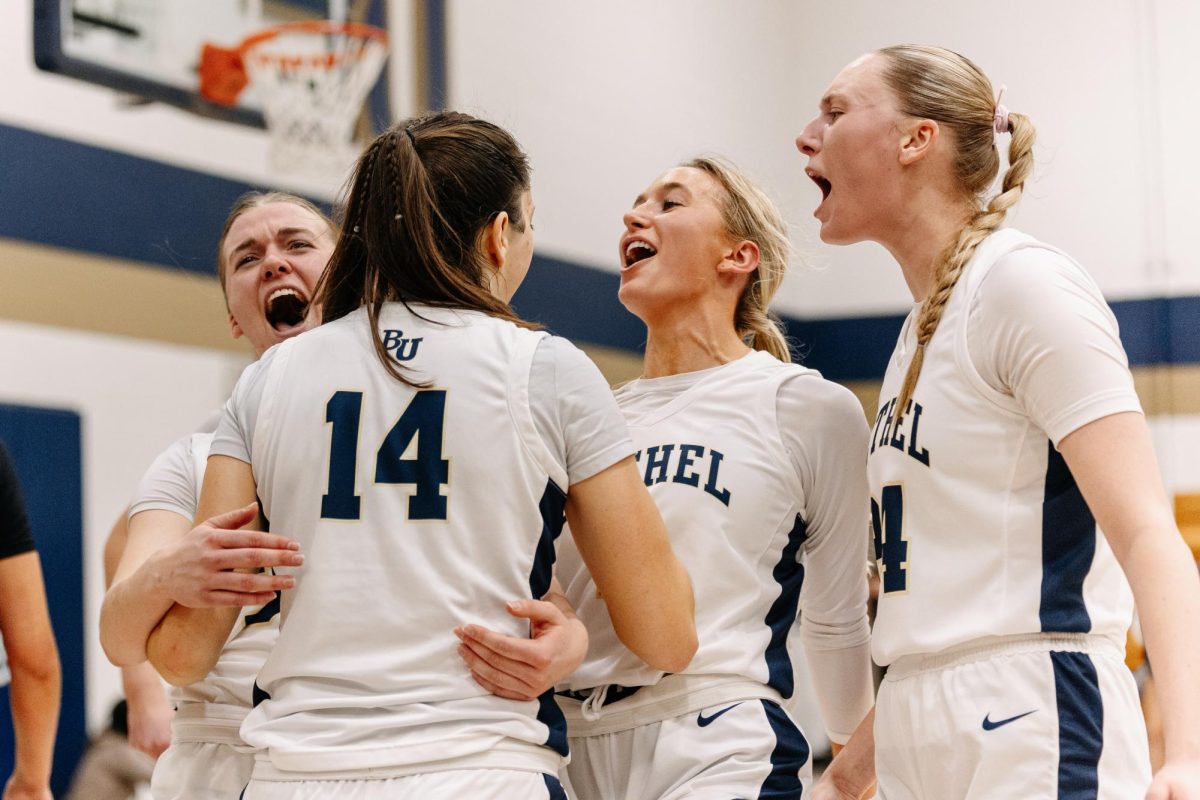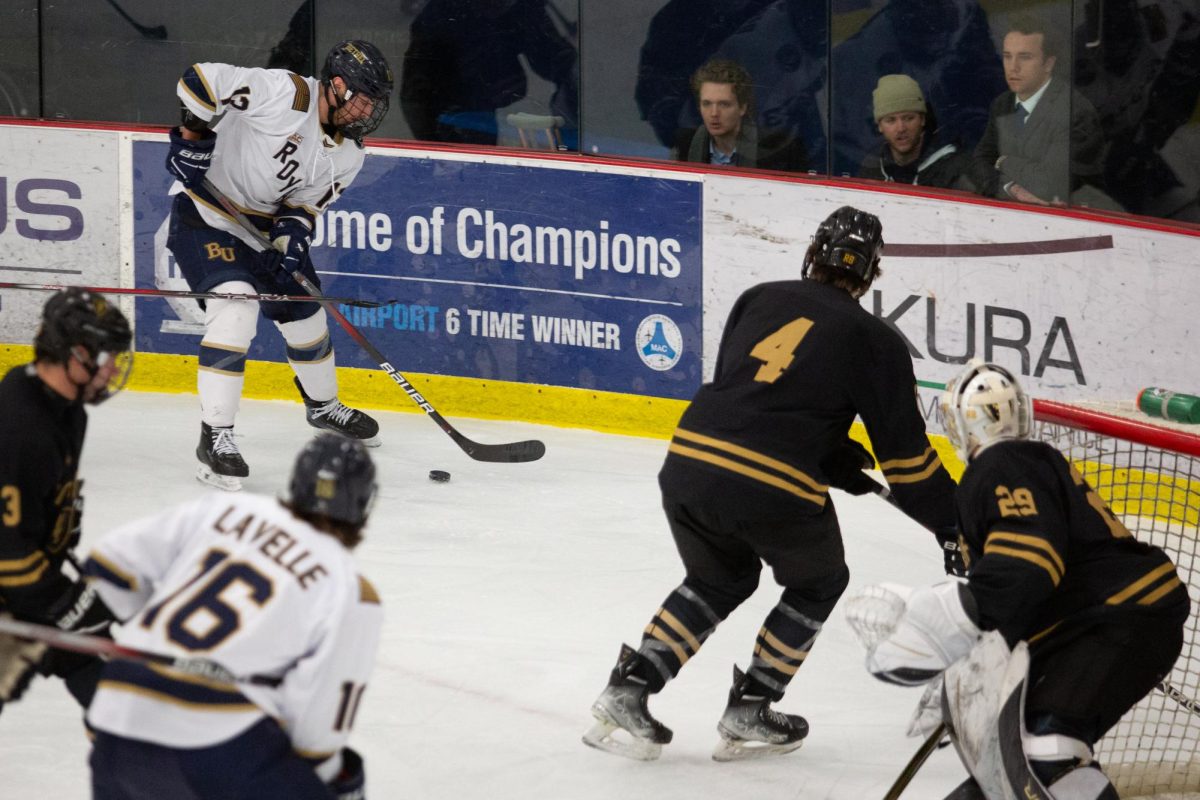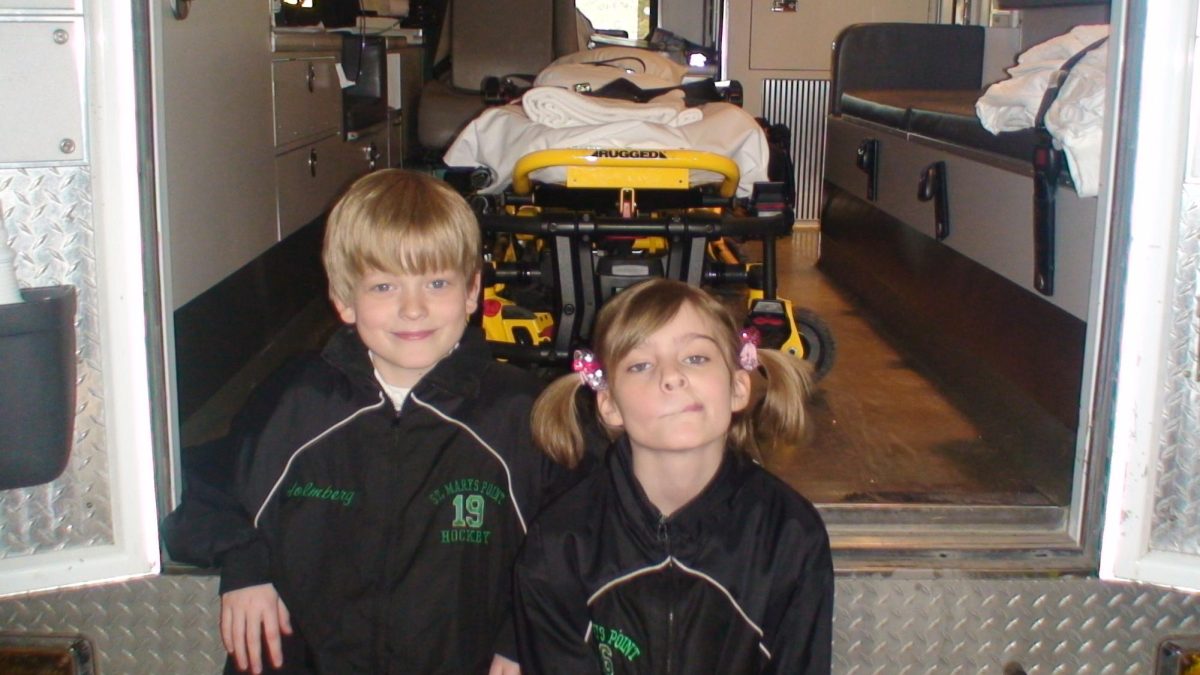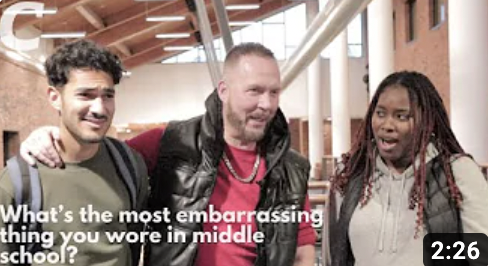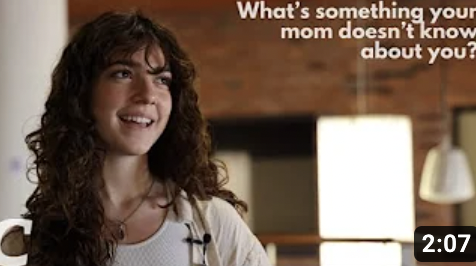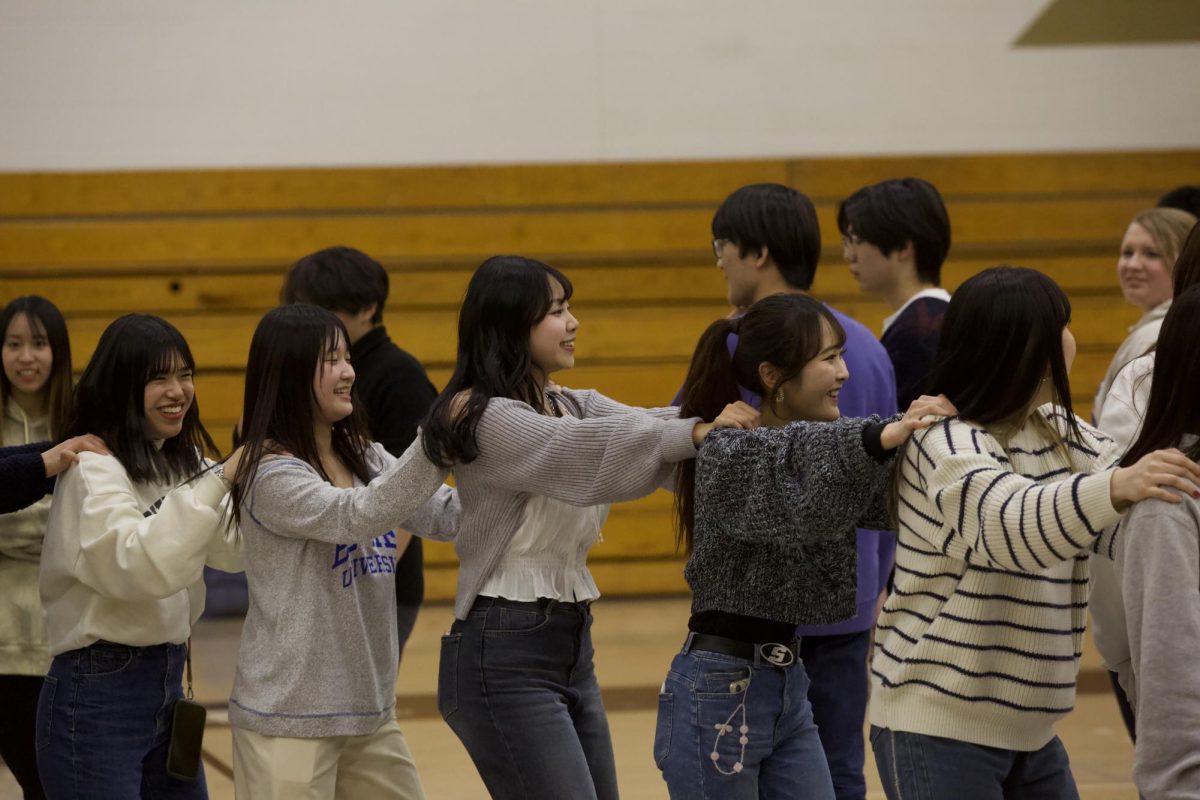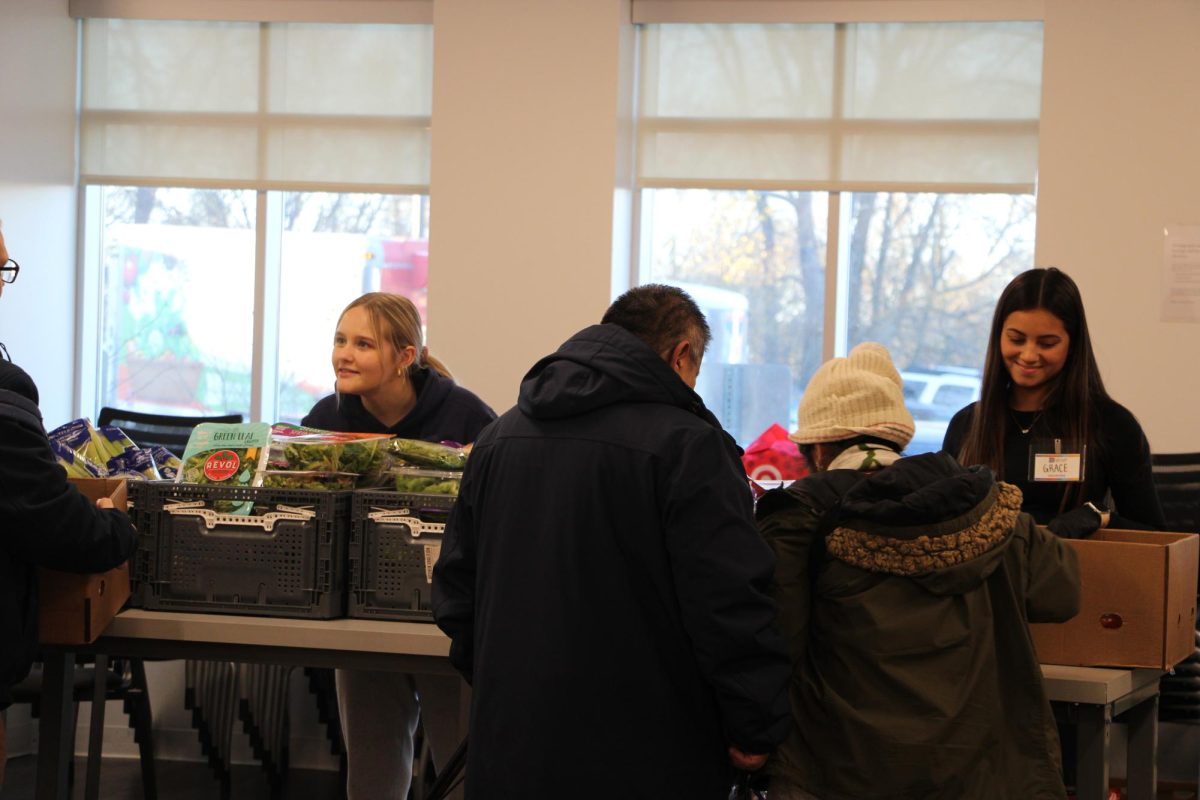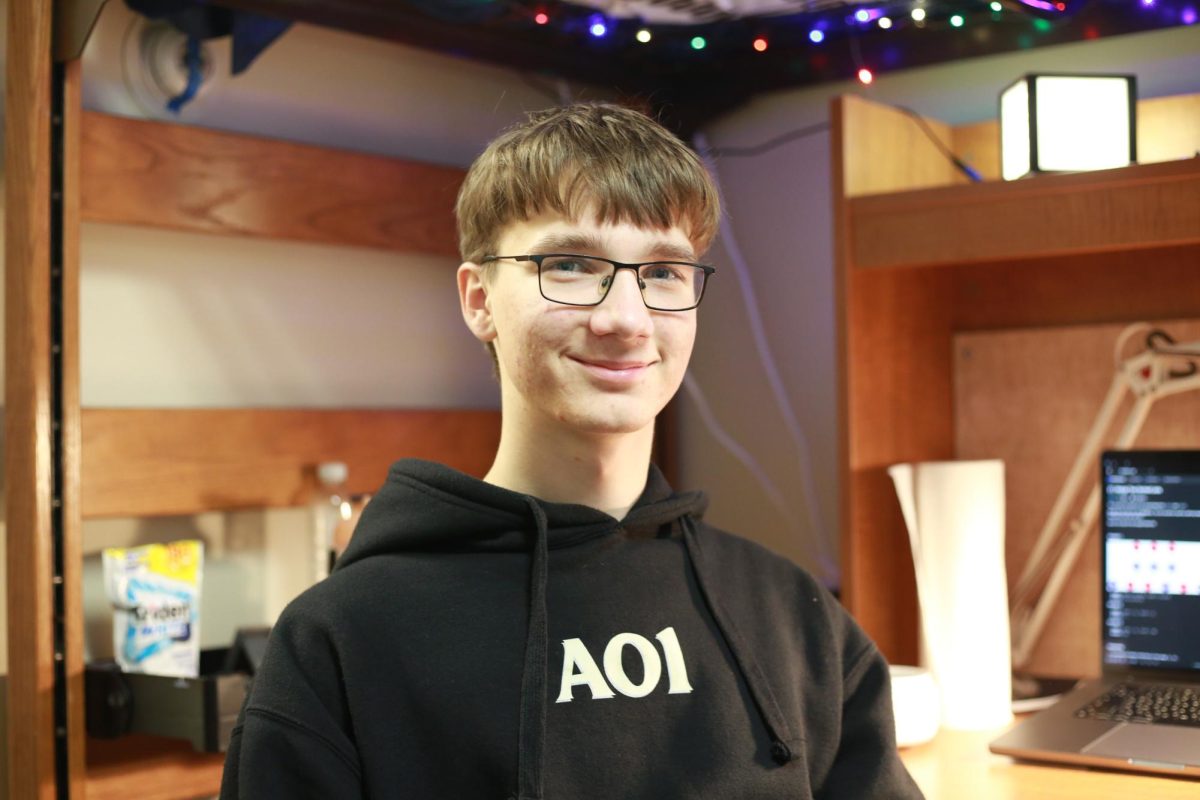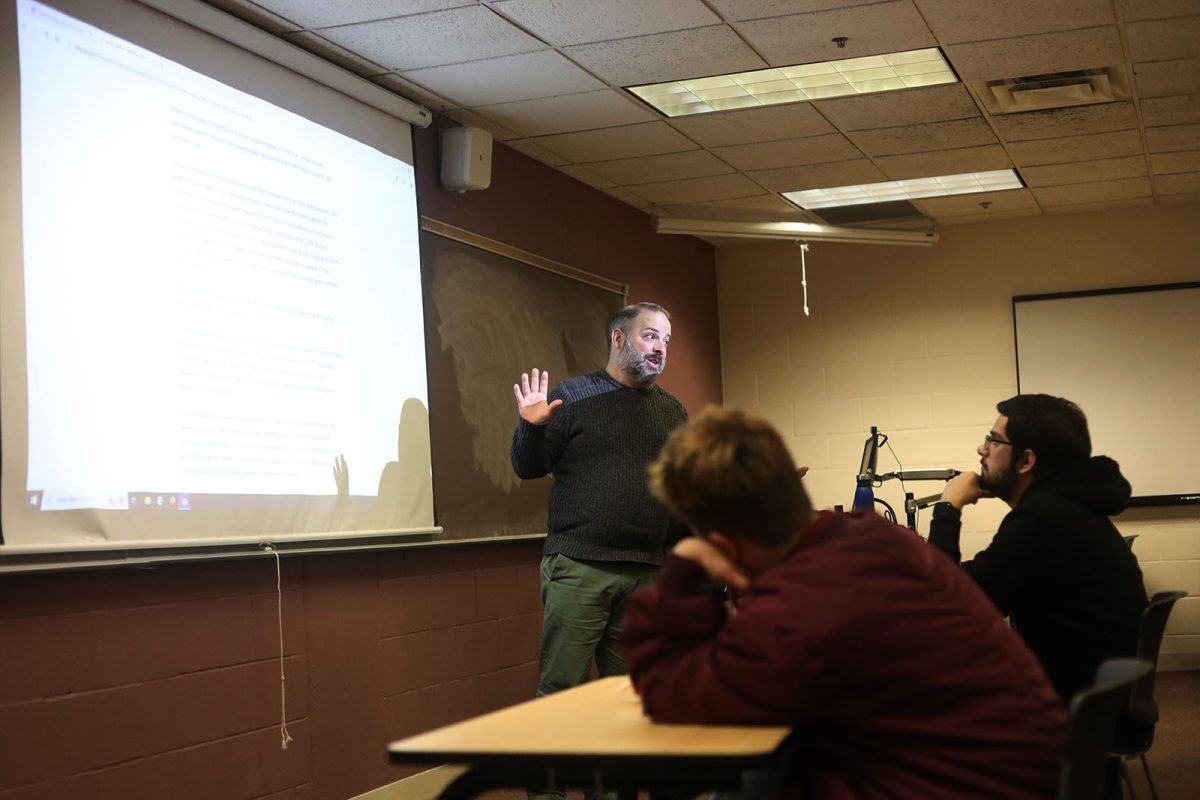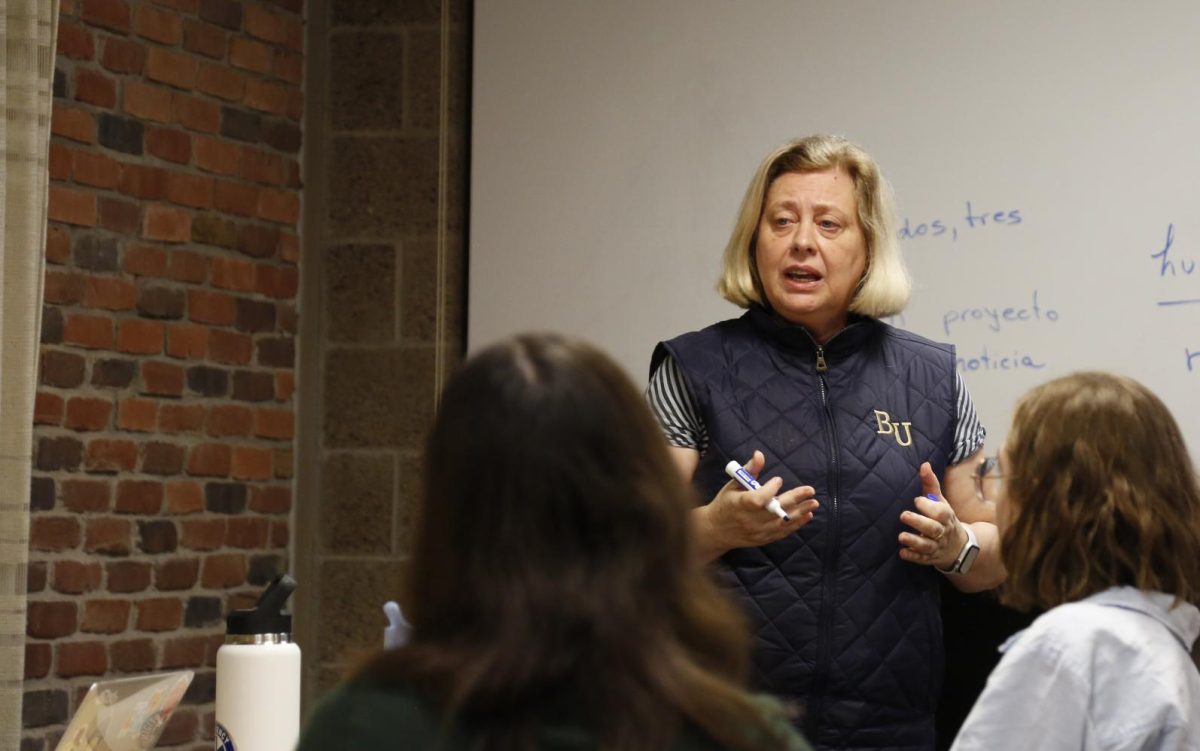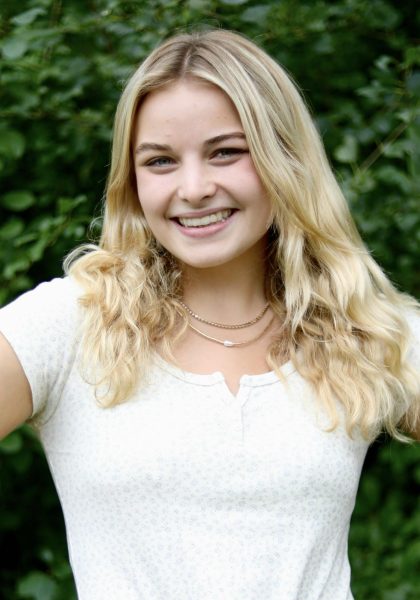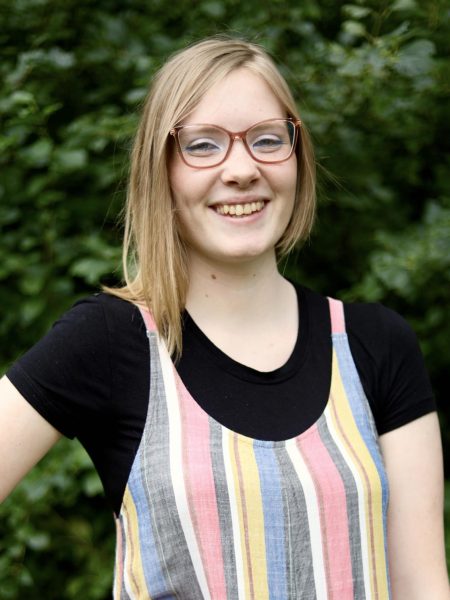The Robertson Center Gym melted into a mixture of squeaking sneakers, laughs and bluegrass fiddles as Japanese intercultural students do-si-doed across the polished court. While the speakers blared Bobby Osbourne’s “Old Joe Clark,” a cowboy-hat-clad square dance instructor yelled out moves he’d taught just minutes ago.
“Wagon!”
Everybody found a partner, put hands on each other’s shoulders and moseyed around the gym.
“Rip and snort!”
Some pairs raised their palms against each other’s into a barn roof shape, making room for their classmates to walk under the structure. With six songs’ worth of square dancing practice down, the calls grew faster.
“Everybody! Horse and jockey, go!”
More sneakers squeaking.
“Don’t let your line get too long!”
Groups splitting up.
“That’ll work. Now weave the line!”
Feb. 29 marked the 12th day in America for 43 Japanese intercultural students, and square dancing served as one of the many cultural immersion activities on their calendars. The students are part of an annual cultural exchange program through the St. Paul Intercultural Institute that has been happening for the past 20 years. Three different universities from three regions of Japan are represented on the trip: Niigata, Kwansei Gakuin and Kumamoto Gakuen.
The University of Niigata is located in the center of Japan’s main island, where the grass grows plush between high, rugged mountains. The campus’s dome-shaped library shelves are lined with books, and small cream-colored lamps illuminate the tables where students study. The campus is made up of 12,527 students, seven of whom traveled overseas to America.
Kumamoto Gakuen University is located in the south of Japan where the air is humid and hangs between the brick buildings. The campus hosts 5,296 students. Many of the 18 students who made the journey from Japan to Bethel are stunned by the cold of Minnesota, having grown accustomed to the subtropical climate of Kumamoto.
Kwansei Gakuin University is located in southern-central Japan, where pine trees grow taller than the bronze roofs and ivory towers of the campus. 18 of the 24,596 students came to experience a new culture in the United States.
“We have the most beautiful campus in Japan,” said Kwansei University Professor of Film Study Yukihiro Tsukada.
Tsukada is representing Kwansei alongside Professor of Law Ai Ogasawara. Both are helping to lead the trip for their students.
“We are very proud,”said Ogasawara.
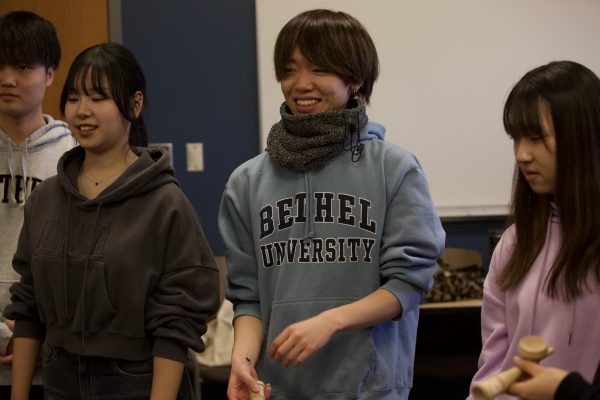
In between hands-on immersion activities, the intercultural students spent time in the classroom with Adjunct Instructors of Languages and Cultures Lisa Bekemeyer and Can Sakirgil. Many of the lessons revolved around developing the students’ English skills, from pronunciation to common figures of speech such as “green thumb” and “rose-tinted glasses.” Every day, the students heard from a speaker on topics important in American culture — laws and their enforcement, issues youth face, diversity in America and more.
According to trip co-leader and Niigata Professor of International and Regional Development Keisuke Fukutomo, most of the students started studying English when they were 13 years old. For many of them, this is their seventh year of learning the language but their first time interacting with native speakers.
“They don’t have many chances to communicate with people from outside of Japan,” Fukumoto said.
After the school day ended, Japanese students returned to host families. The professors consider this experience the most important part of the trip, as it provides students with access to American language and culture that can’t be recreated in a classroom.
“This program helps students create a strong bond with their host family and a strong bond with people outside of Japan,” Fukumoto said. “They leave feeling like they have the ability to create connections with different cultures and people of different backgrounds.”
–
As the rapid bluegrass mandolin of Cadillac Sky’s “Thank You Esteban” slowed into a final chord, host parent Anne Miller came to the Robertson Center Gym to pick up Airi Arima, her host student. Some Japanese intercultural students continued to spin clockwise in hand-holding circles with other students from both Bethel and Japan. Arima, however, was both dizzy and ready to leave.
“I square danced one time. One time is enough,” Arima said.
Arima is the fourth Japanese student who Miller has hosted since 2018, and the first student she’s hosted since the COVID-19 pandemic. Throughout the years, Miller has seen the personalities and preferences of the students — they have different things they enjoy and wish to learn from the trip.
Miller’s first student loved cheese. She wanted to try cheese curds and cheese burgers and mac and cheese — anything melty. That same student also loved reading alongside Miller’s two daughters. They’d spend evenings reading Amelia Bedelia books, the girls stopping to explain whenever Amelia’s clumsiness dipped into unknown vocabulary.
“It was a huge deal for them to have this older sister in the house,” Miller said.
Another one of Miller’s previous host students loved sweets — she wanted to try everything sugary America had to offer. Miller took her to ice cream shops, donut bakeries and, memorably, Candyland in Stillwater, where fresh caramel corn is scooped from metal bins behind glass cases and chocolatiers make confections on site.
This year, Arima’s request was simple. She wanted to see snow.
Miller realized this was not a wish that could be granted by a trip to Target or chocolatier at Candyland. And to make matters worse, this February was deemed the Twin Cities’ warmest on record. MPR News meteorology referred to the unseasonable warmth as both “remarkable” and “wacky.”
Arima hails from southern Japan, where snow sometimes falls but rarely accumulates. She’d never seen it happen before, so Miller prayed for a little snow — the kind that would stick. Three days before Arima’s Feb. 18 arrival, the metro woke up to a half-foot of white, powdery snow. It would stick — sort of. Temperatures were set to rise again, but not before Arima’s plane touched the tarmac at MSP.
“I told her, ‘It’s gonna melt, it’s gonna be brown, but it’s snow,’” Miller said.
Though the Millers’ four host students came with different hopes, many of the Japanese intercultural students expressed surprise at the same things.
For one, American bathrooms take some getting used to. The porcelain toilet seats feel cold in comparison to Japan’s heated ones, and there are no bidets. Miller explains showering in America to her host students when they first come. She shows how the shower liner goes inside the tub and the cloth curtain stays outside.
In Japan, bathing is important to the daily routine. The body is cleaned twice with soap, shampoo and a hand-held shower head before entering a heated bathtub, or ofuro. These bathtubs are for relaxing, not cleaning the body.
“Baths make me happy,” Kwansei student Shuji Irie said. “I just sit and relax.”
On top of that, the dogs here are bigger. Miller’s 60-pound Alaskan Shepherd tends to scare students at first, until they realize it’s as friendly as the lap-sized dogs of Japan.
Although the Japanese intercultural students’ seven years of English education prepares them for conversations in America, the difference in communication style takes some getting used to. In Japan, chinmoku — meaning silence or quietness — is revered. It’s a way of showing respect to others or entering a state of mindfulness and meditation.
Videos of Shinjuku Station in Tokyo during rush hour, the busiest railway station in the world, have circled social media in recent years. There’s little noise save for squeaking brakes and clicks of heeled shoes. In a station that transports three million people every day, silence is a sign of respect for one another.
Upon arrival in America, many of the intercultural students noticed the less reserved communication style of Americans. While waiting in line for pasta, chicken and stir fry in the Monson Dining Center, Japanese immersion students were exposed to extroversion and curiosity from their American peers.
“American people are so kind, and they ask so many questions,” Niigata student Kanato Sasaki said. “We are very shy, I guess, but we can speak English, so I try my best to answer the questions.”
Kwansei student Shogo Honda noticed the pickup trucks and semis barreling down I-694 East on the group’s way to Willow River State Park in Hudson, Wisconsin. He saw the diesel-powered vehicles on every road, for that matter. Tall and shiny radiator grilles, a fuming exhaust pipe and 18 wheels — 10 more than the freight trucks of Japan.
“The trucks here look like Optimus Prime,” Honda said.
Students also shared similar fears: breaking out from eating too much dairy, being unintentionally disrespectful and encountering guns. Miller says her students have initially come in with a perception that America is less safe than Japan. By the end of the month-long trip, the students feel more secure in the foreign environment.
“As a 20-year-old I never would’ve flown across the world,” Miller said. “They have that adventurous spirit.”
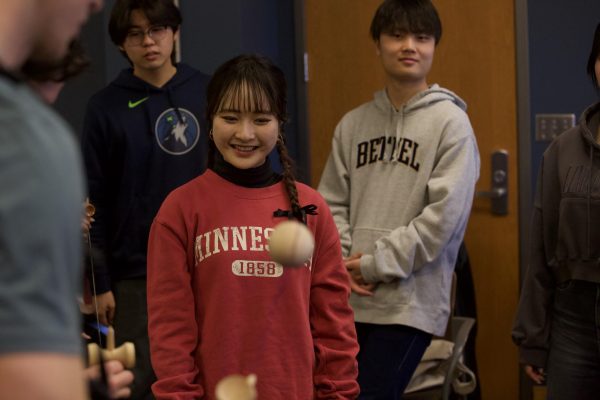
March 5, six days before leaving for Japan, the intercultural students hosted a cultural festival in the Brushaber Commons. After three weeks of learning about American culture, students set up tables throughout the fourth-floor meeting rooms to return the favor. They’d be teaching Bethel students about Japan.
One table featured Sapporo Ichiban, Japanese-style ramen served up in styrofoam bowls by intercultural students. To the left, other students passed out brightly-colored Japanese candies from a stacked pile. To the right, Arima and Honda taught Bethel students how to play kendama — a Japanese cup-and-ball skill toy.
Honda grabbed the kendama, bent his knees a little, then boosted his body completely straight and vertical again. The ball followed his motion, shooting straight up, then falling to land perfectly centered in the small wooden cup.
“Use the knees, not the arms, like that,” Honda said, handing the kendama back.
Arima watched as the Bethel student tried again, cheering and clapping as the ball got closer and closer to balancing in the cup. On the student’s fifth try, the ball went in.
“That’s sweet, I’ve never done that before,” he said.
At the next table, Kumamoto students Nanako Yoshikawa, Yumeka Matsumoto and Chisato Maruyama printed out information about Japanese animation film studio Studio Ghibli and its founder, Hayao Miyazaki. Pictures of 20 Ghibli movies were put at the front of the table. Bethel students who had seen some of the films pointed out their favorites, one of them pointing at “Whisper of the Heart.”
“I love that one, too,” Nanaki responded.
She pointed her own finger at Seiji Amasawa, the male protagonist of the movie.
“Very cute gentleman,” she said.
A resounding, passionate nod was shared between the three Kumamoto and three Bethel students, followed by laughter. The conversation finished with a discussion about “Spirited Away,” which they all agreed was an essential Ghibli watch. The Bethel students said their goodbyes before moving over to the next table, where they would learn to fold shimmery orange paper into swans.
March 11, three days after Bethel students left campus for spring break, Japanese intercultural students gathered at MSP to start their 20-hour journey home.

